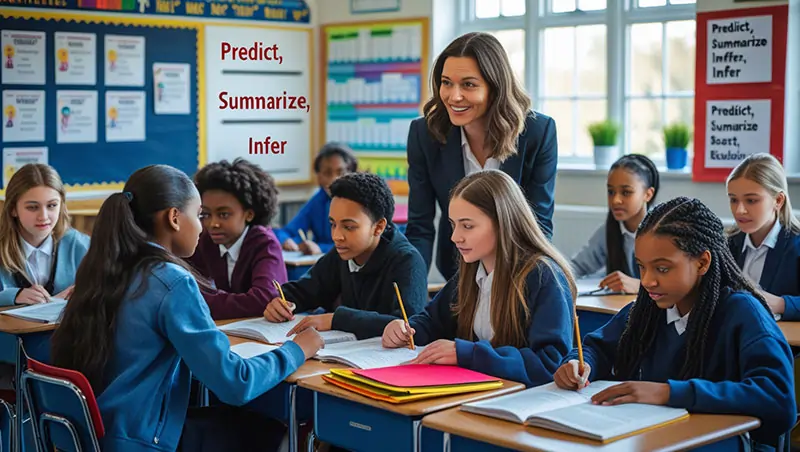Grade 7 Reading Comprehension Skills: Strategies and Worksheets
Middle school is when students start to learn how to read and understand what they read. Seventh graders should be able to do more than just understand what a text says. They ought to be able to think about it more deeply. If students can read well, they can understand what they read, figure out what it means, and use what they know in other subjects. This article talks about how important it is to understand what you read, some basic strategies, and how comprehension worksheets can help you learn more effectively.
1. Importance of Reading Comprehension in Grade 7
Students in seventh grade learn to read in order to learn. If students have good reading comprehension skills for seventh grade, they can do the following:
- Be able to read and understand hard texts in literature, science, and social studies
- Get better at writing and vocabulary
- Be able to think critically and make connections
- Prepare for the tests and schoolwork that are coming up.

2. Skills Students Should Develop
Students need to learn the following to do well on grade 7 reading comprehension:
| Skill | Description |
| Main Idea Identification | Finding the main idea of a passage |
| Inference | Making conclusions based on evidence from the text |
| Vocabulary in Context | Figuring out what words mean by looking at the context |
| Cause and Effect | Looking at how events are connected |
| Summarizing | Condensing information without losing meaning |
| Author’s Purpose | Understanding why the text was written |
| Compare and Contrast | Identifying similarities and differences between ideas or texts |
3. Types of Comprehension Questions
Questions about understanding help you find out how well someone understands something. Some common types are:
Questions that are real
The text gives clear answers. For instance, “What is the main character’s name?”
Questions that make you think
Ask them to read between the lines. For instance, “Why do you think the character did that?”
Questions for Evaluation
Require personal judgment or critical thinking. For instance, “Do you agree with what the author says? Why or why not?”
Questions About Words
Make sure the reader knows what the words in the passage mean. For instance, “What does the word ‘reluctant’ mean in the third paragraph?”
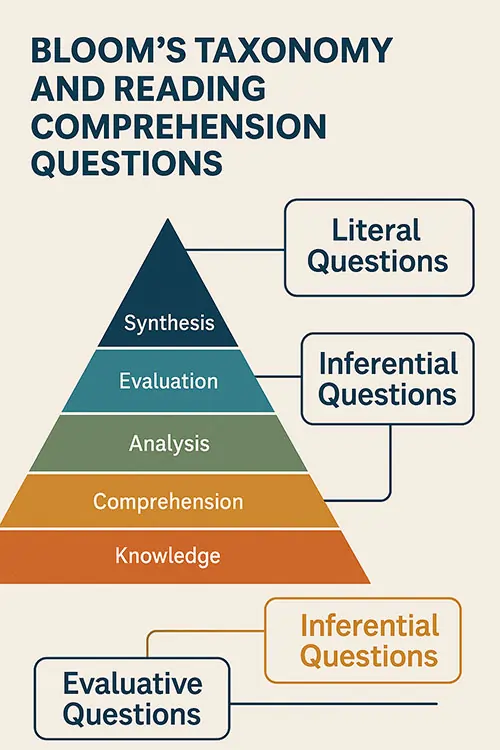
4. Worksheet Breakdown
Comprehension worksheets are a great way to help students remember what they’ve learned. A well-organized worksheet should have:
| Section | Description |
| Reading Passage | A short story, article, or excerpt that is good for Grade 7 |
| Vocabulary Task | Definitions, synonyms, or context clues |
| Comprehension Questions | Mix of literal, inferential, and evaluative questions |
| Writing Prompt | Short essay based on the reading |
| Graphic Organizer | Venn diagram, story map, or cause-effect chart |
Example of a Worksheet Design
1. The title is “The Mysterious Signal.”
– Vocabulary Task: What does the word “glimmer” mean in this case?
2. Questions about comprehension:
– What is the main problem in the story?
– What happens to the character at the end?
– What is the story’s main point?
3. Writing Prompt:
– Write a paragraph about what you would do if you were in the same situation.
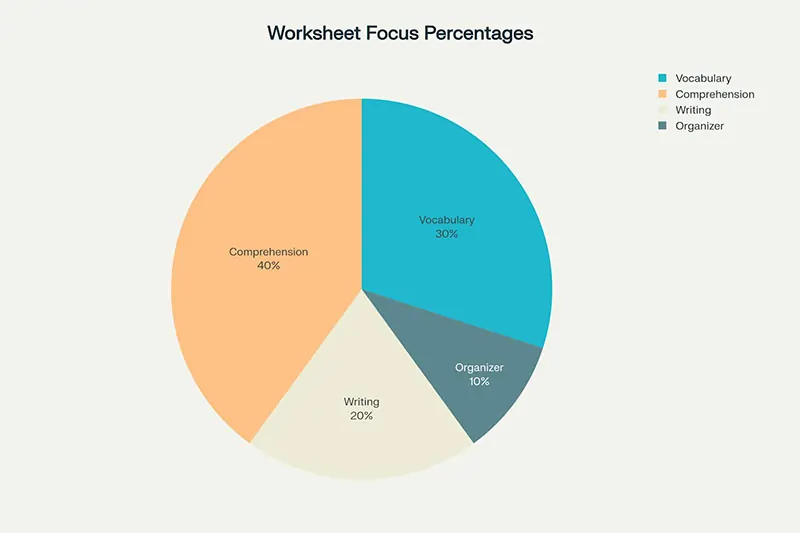
5. Guided Reading Strategies
These guided strategies can help parents and teachers help their kids do well:
a. Before you read
- Discuss the title, the headings, and the pictures
- Try to guess what the book is about
b. While you read
- Use symbols to mark up the text (like ? for parts that are hard to understand)
- Underline the main ideas
c. After you read
- Discuss the main points
- Fill out a worksheet to show that you got it
- Write a short summary to help you think about it
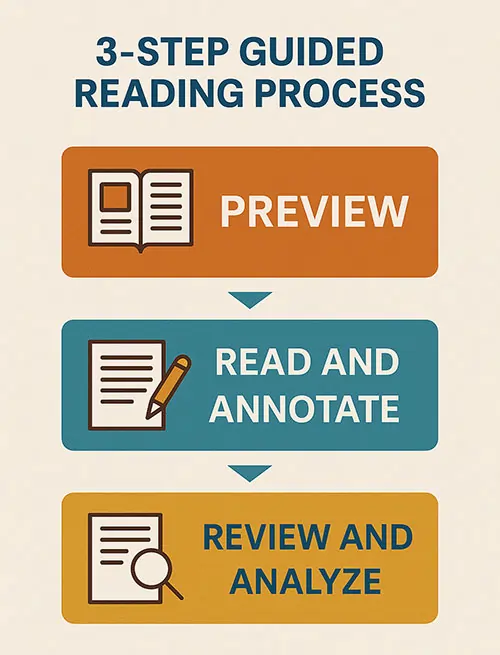
6. Answer Key and Analysis
Students can check their own work and learn from their mistakes if you give them an answer key. Every answer should have:
| Question Type | Sample Answer | Explanation |
| Literal | The boy’s name is Max. | This is what it says in line 2. |
| Inferential | Max felt nervous. | Based on his fidgeting behavior. |
| Evaluative | Yes, the ending was fair. | Gives textual evidence to back up opinion. |
Asking students to explain why they chose an answer helps them understand better.
7. Encouraging Reading Habits
To build lifelong reading skills, encourage regular reading:
Tips for Parents and Teachers
- Make the reading area comfortable.
- Set daily reading goals.
- Give them a choice of genres, such as fiction, nonfiction, fantasy, and biographies.
- You can read books or listen to them on your phone.
Recommended Books for Grade 7
| Title | Author | Genre |
| “Holes” | Louis Sachar | Fiction |
| “Wonder” | R.J. Palacio | Realistic Fiction |
| “The Giver” | Lois Lowry | Science Fiction |
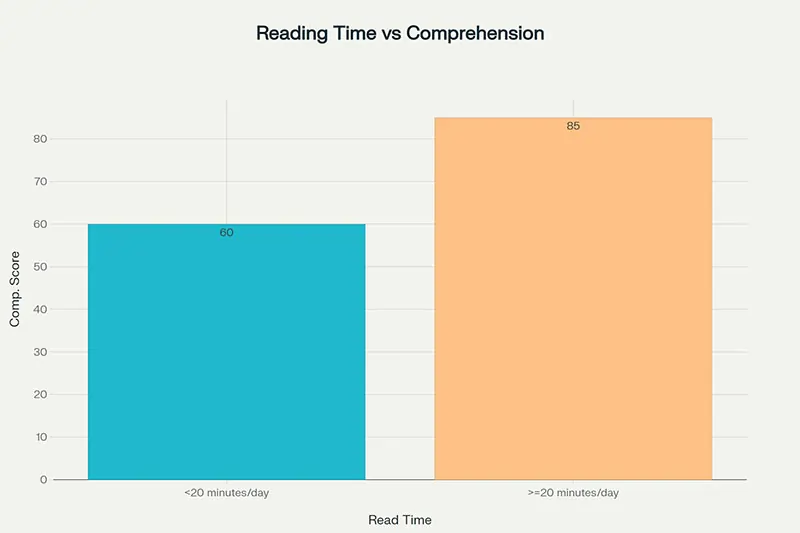
8. Frequently Asked Questions (FAQ)
Q1: How often should seventh graders work on comprehension worksheets?
A: You should do this at least two to three times a week to keep making progress.
Q2: What kinds of passages are best for seventh graders?
A: A mix of stories, facts, and reasons.
Q3: Do digital worksheets work?
A: Yes, especially if they have interactive parts and get feedback right away.
Q4: How can I tell if my child understands what they read at home?
A: After reading, ask questions, use worksheets, and tell them to write summaries.
9. Conclusion
Reading and understanding grade 7 reading comprehension is an important step toward doing well in school. Structured practice with comprehension worksheets, guided reading, and good reading habits can help students become confident and independent readers. Parents and teachers can help students get the most out of reading by asking them smart questions, giving them interesting things to read, and making them analyze what they read on a regular basis.
Invest in reading today to build thinkers for tomorrow.

